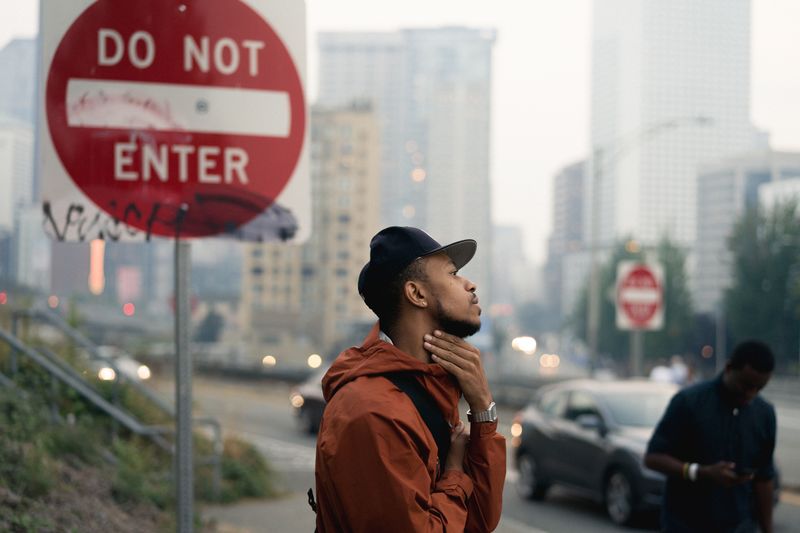Some Known Facts About Street Photographers.
Some Known Facts About Street Photographers.
Blog Article
Some Known Details About Street Photographers
Table of ContentsStreet Photographers Can Be Fun For EveryoneNot known Facts About Street PhotographersThe 4-Minute Rule for Street PhotographersThe Basic Principles Of Street Photographers The Only Guide for Street Photographers
, a category of digital photography that documents daily life in a public place. The actual publicness of the setting enables the professional photographer to take candid images of complete strangers, typically without their knowledge. Road digital photographers do not always have a social purpose in mind, yet they choose to separate and catch moments which may otherwise go unnoticed.Though he was influenced by much of those who influenced the road photographers of the 1950s and '60s, he was not primarily interested in catching the spirit of the road. The impulse to visually record people in public began with 19th-century painters such as Edgar Degas, douard Manet, and Henri de Toulouse-Lautrec, that worked side by side with digital photographers attempting to capture the significance of city life.
As a result of the somewhat primitive technology readily available to him and the lengthy direct exposure time needed, he battled to capture the hustle and bustle of the Paris streets. He try out a collection of photo techniques, trying to locate one that would certainly allow him to catch motion without a blur, and he discovered some success with the calotype, patented in 1841 by William Henry Fox Talbot. In comparison to Atget, digital photographer Charles Marville was hired by the city of Paris to create an encyclopaedic paper of Haussmann's city preparation task as it unravelled, thus old and new Paris. While the digital photographers' topic was basically the exact same, the results were markedly different, showing the influence of the photographer's intent on the personality of the photos he created.
The Ultimate Guide To Street Photographers
Offered the fine quality of his photos and the breadth of material, engineers and artists usually purchased Atget's prints to make use of as referral for their own job, though industrial rate of interests were hardly his major motivation. Rather, he was driven to photo every last residue of the Paris he loved. The mingled interest and seriousness of his mission luster through, causing photographs that narrate his very own experience of the city, high qualities that prepared for street digital photography of the 20th century.

Unlike his peers, Brassa made use of a larger-format Voigtlnder camera with a much longer exposure time, requiring him to be more calculated and thoughtful in his method than he could have been if utilizing a Leica. (It is assumed that he may not have been able to manage a Leica at that time, yet he did, nevertheless, use one in the late 1950s to take colour photos.) Brassa's pictures of the Paris abyss lit up by synthetic light were a revelation, and the compilation of the collection that he released, (1933 ), was a major success.

What Does Street Photographers Mean?
It is due to this basic understanding of the art of picture taking that he is typically attributed with rediscovering the tool throughout once more roughly a century considering that its innovation. He took photos for greater than a half century and affected generations of digital photographers to trust their eye and intuition in the moment.
These are the concerns I will try link to respond to: And after that I'll leave you with my very own interpretation of road photography. Yes, we do. Allow's begin with defining what a definition is: According to it is: "The act of defining, or of making something definite, distinctive, or clear".
No, absolutely not. The term is both limiting and misinforming. Appears like a street photography ought to be pictures of a streets best?! And all road digital photographers, besides a handful of outright newbies, will fully value that a road is not the vital part to street photography, and in fact if it's an image of a road with possibly this content a couple of uninteresting individuals doing absolutely nothing of rate of interest, that's not street photography that's a picture of a street.
The 9-Minute Rule for Street Photographers
He makes a valid factor do not you assume? Nevertheless, while I concur with him I'm unsure "candid public digital photography" will capture on (although I do type of like the term "honest photography") because "road photography" has actually been around for a very long time, with many masters' names affixed to look what i found it, so I believe the term is right here to remain.
You can shoot at the beach, at an event, in a street, in a park, in a piazza, in a cafe, at a gallery or art gallery, in a metro terminal, at an event, on a bridge, under a bridge ...
Facts About Street Photographers Uncovered
Yes, I'm afraid we worried no choice! Without policies we can not have an interpretation, and without a meaning we do not have a style, and without a genre we don't have anything to specify what we do, and so we are stuck in a "regulations definition genre" loophole! - Street Photographers

Report this page